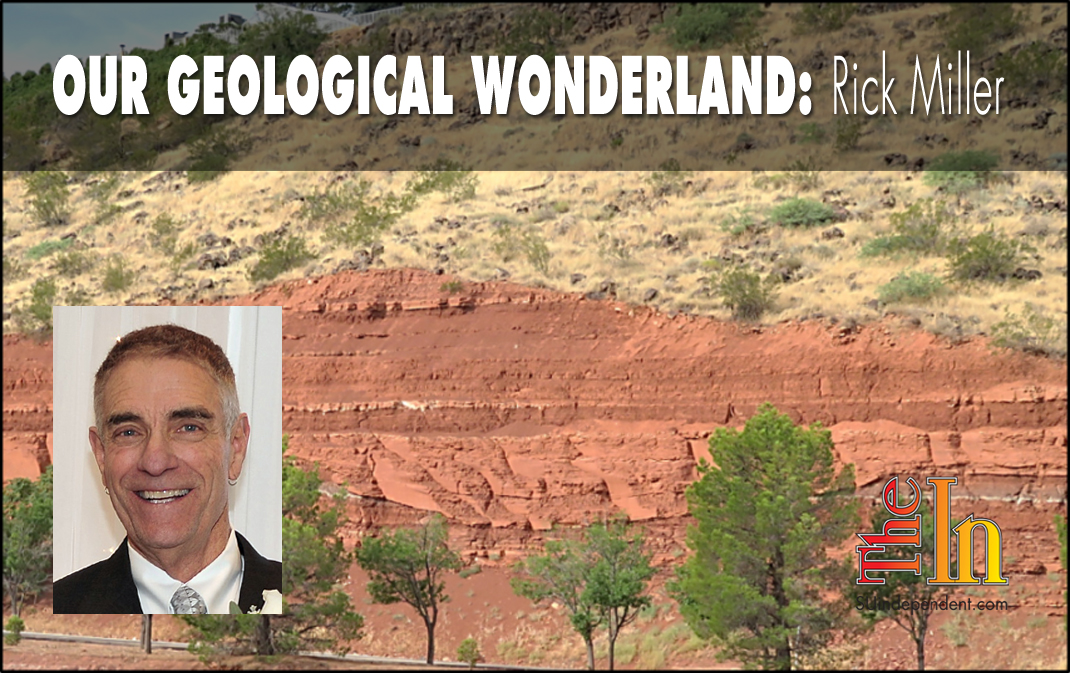
Our Geological Wonderland: The Kayenta Formation, an ancient Jurassic Park
Although often overshadowed by massive nearly vertical cliffs of the overlying Navajo Sandstone, the bright red weathering Kayenta Formation is also quite distinctive. Although occurring throughout the Colorado Plateau Province, in St. George this formation is exposed mainly in the northern portions of the city (Figures 1 and 2).
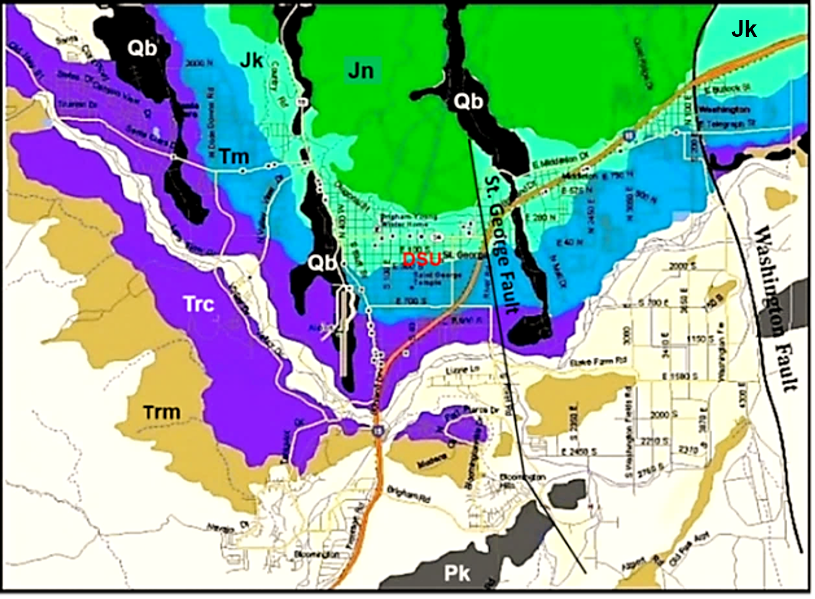
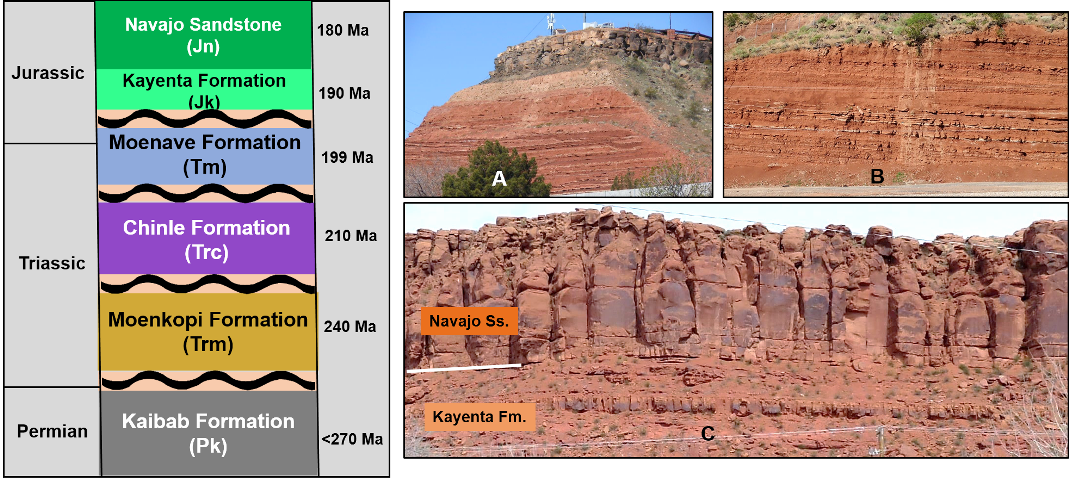
The Kayenta Formation was named by A. A. Baker in 1936 for exposures near Kayenta, Arizona. This formation also occurs within Colorado Plateau Geologic Province of northern Arizona, northwestern Colorado, Nevada, and Utah. It consists mostly of brown and red weathering siltstone and sandstone, and in southwestern Utah it is about 500 feet thick.
Most of the Kayenta Formation consists of thin to medium layers of fine-grained sedimentary rocks such as siltstone with occasional thin intervals of fine grained, cross-bedded sandstone. Overall, these rocks were originally deposited in a nearly flat-lying lacustrine terrestrial environment with slow moving streams and rivers and some lakes (Figures 3 and 4). These paleoenvironmental conditions existed in a fluctuating seasonal climate that varied from warm and wet to warm and dry during Early Jurassic time in what is now the southwestern United States.
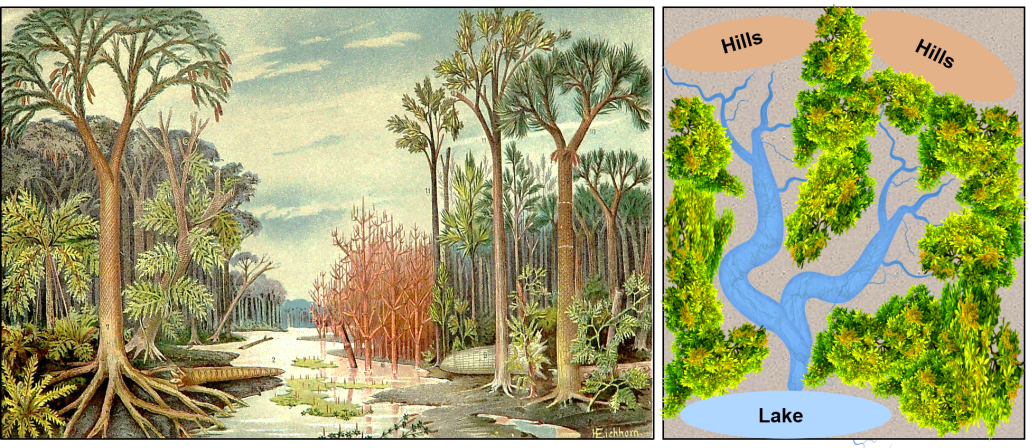
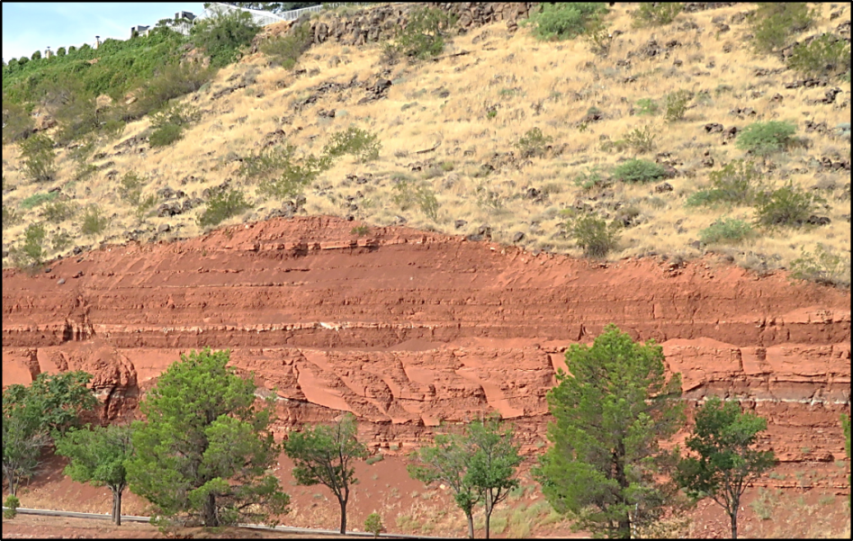
At this time in the Earth’s history, this region was situated on the western edge of a supercontinent called Pangaea and was probably between 30 and 40 degrees north of the equator. Beginning about the time that Kayenta Formation sediments were being deposited during Early Jurassic, between 185 and 195 million years ago, Pangaea was just beginning to split apart (Figure 5). At about 180 million years ago, this splitting (called rifting) began to form what is now the Atlantic Ocean, and what became the North American continent began its slow drift westward. This drift has continued to the present time. This plate tectonic shifting had significant effects on geographic conditions during Jurassic and younger times and was a major factor in causing changes in the history of life. These physical and biological changes have continued up to the present time.
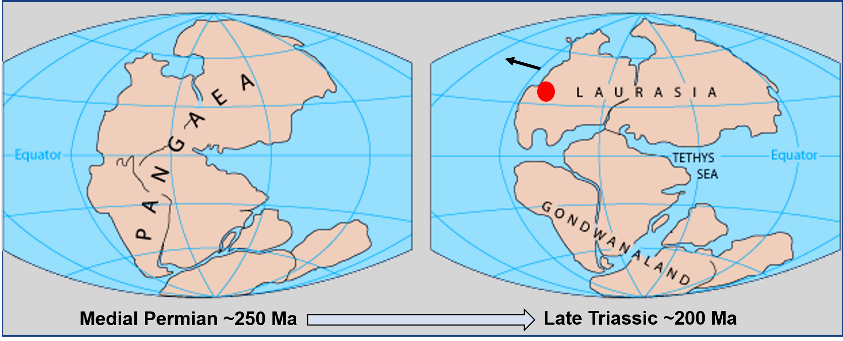
The beginnings of a “Jurassic Park”: The Kayenta Fossil Record
A diverse assemblage of plants and animals existed during Early Jurassic time within this region, which is now mostly within the Colorado Plateau Geologic Province. Fossils found within Kayenta rocks at various locations include numerous types of plants (Figure 6), freshwater invertebrates, fish, amphibians, and reptiles and remains of terrestrial and flying reptiles, small mammals, dinosaurs, and abundant trace fossils such as coprolites (fossil poop), footprints, and trackways. These organisms were living within complex ecosystems including streams, rivers, lakes, and floodplains, which existed within low-lying terrestrial, plant-rich paleoenvironments.
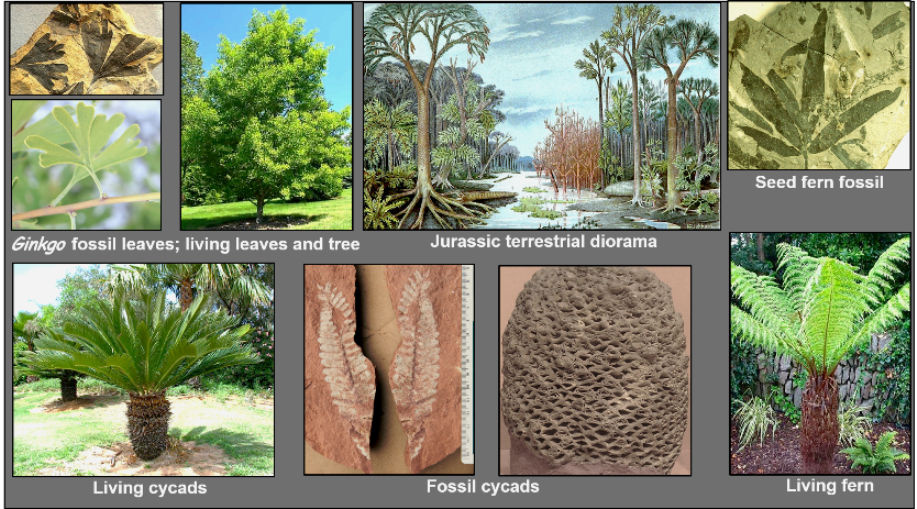
For many people, the most interesting fossils in Kayenta rocks are dinosaur remains and their trace fossils. Jurassic time lasted about 54 million years (199–145 Ma). The rock record indicates an episode of extinctions occurred at the beginning of this time interval (the Triassic-Jurassic boundary), but biological diversity rebounded relatively rapidly during Early Jurassic time. Beginning in Early Jurassic time and continuing through this period, dinosaurs truly came into their own.
Although the earliest dinosaurs are known from older Middle Triassic rocks, their abundance and diversity significantly increased during the Jurassic, and some species grew to enormous sizes. Apparently, environmental and climatic conditions on Pangaea and then later Laurasia and Gondwanaland were relatively mild. These conditions allowed dinosaurs to undergo what could be termed an evolutionary explosion. They became the dominant land animals on Earth, and their fossil remains can be found on all continents. This dominance lasted for roughly 120 million years and would have probably continued had it not been for a catastrophic meteorite impact on the Yucatan Peninsula and massive volcanic eruptions on parts of what are now India and Pakistan. These two extreme physical events are both dated as having occurred about 66 million years ago. Except for birds, all other lineages of dinosaurs became extinct at that time.
Dinosaur fossils in Kayenta rocks consist of trace fossil footprints and trackways and also less common skeletal remains and teeth (Figure 7). Although these fossils are abundant and sometimes spectacular in other areas on the Colorado Plateau, there are only a few localities in St. George such as those discovered during construction of the Southern Parkway. Although many specimens were collected and their locations mapped, disappointingly all the Southern Parkway sites were subsequently covered by road fill for the parkway.
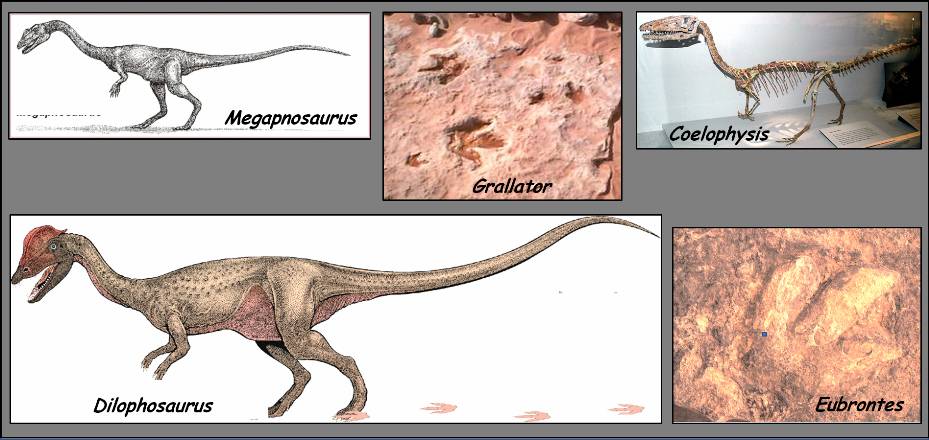
The number of taxonomic groups found as fossils within the Kayenta Formation has been expanding with continued discoveries in recent years (Table 1). Unfortunately, as noted above, most of these fossil sites occur in areas away from St. George.
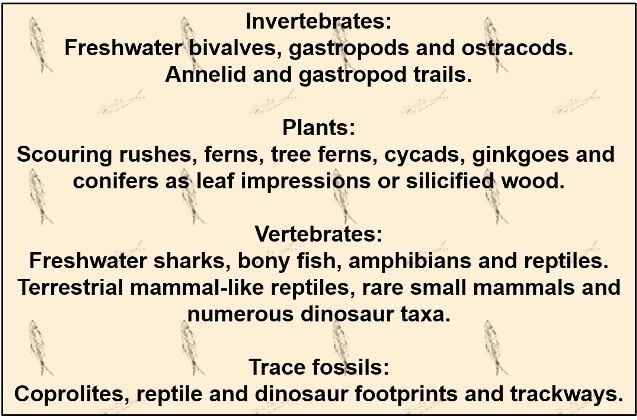
The Kayenta Formation in St. George is generally colorful, but it is overshadowed by other rock units such as the Navajo Sandstone (massive cliffs) and the Moenave Formation (well known dinosaur trackways). However, from a historical perspective, the time framework in which the Kayenta rocks were formed represents the beginnings of what could be called a worldwide dinosaur dynasty that lasted about 120 million years.
A final speculation
An interesting but speculative argument can be put forth based on modern studies of dinosaur physiology derived from the fossil record. It is now recognized that dinosaurs were a very diverse group on most continental land masses. They possessed many characteristics that we see in mammals today, such as postnatal care of their young, high metabolic rates and rapid growth, large brains, and other “advanced characteristics.” Despite these high functioning characteristics, dinosaurs were basically wiped out by catastrophic physical events noted above, which caused a worldwide mass extinction that is used to mark the end of Mesozoic time at about 65–66 million years ago.
Except for birds, all other lineages of dinosaurs became extinct. It is quite possible that if not for this extinction event mammals might never have had the opportunity take over and become dominant.
Articles related to “Our Geological Wonderland: The Kayenta Formation, an ancient Jurassic Park”
Our Geological Wonderland: A self-guided field trip in and around St. George
Our Geological Wonderland: Examining the Biblical Great Flood




Thank you for this fascinating series of geology articles!